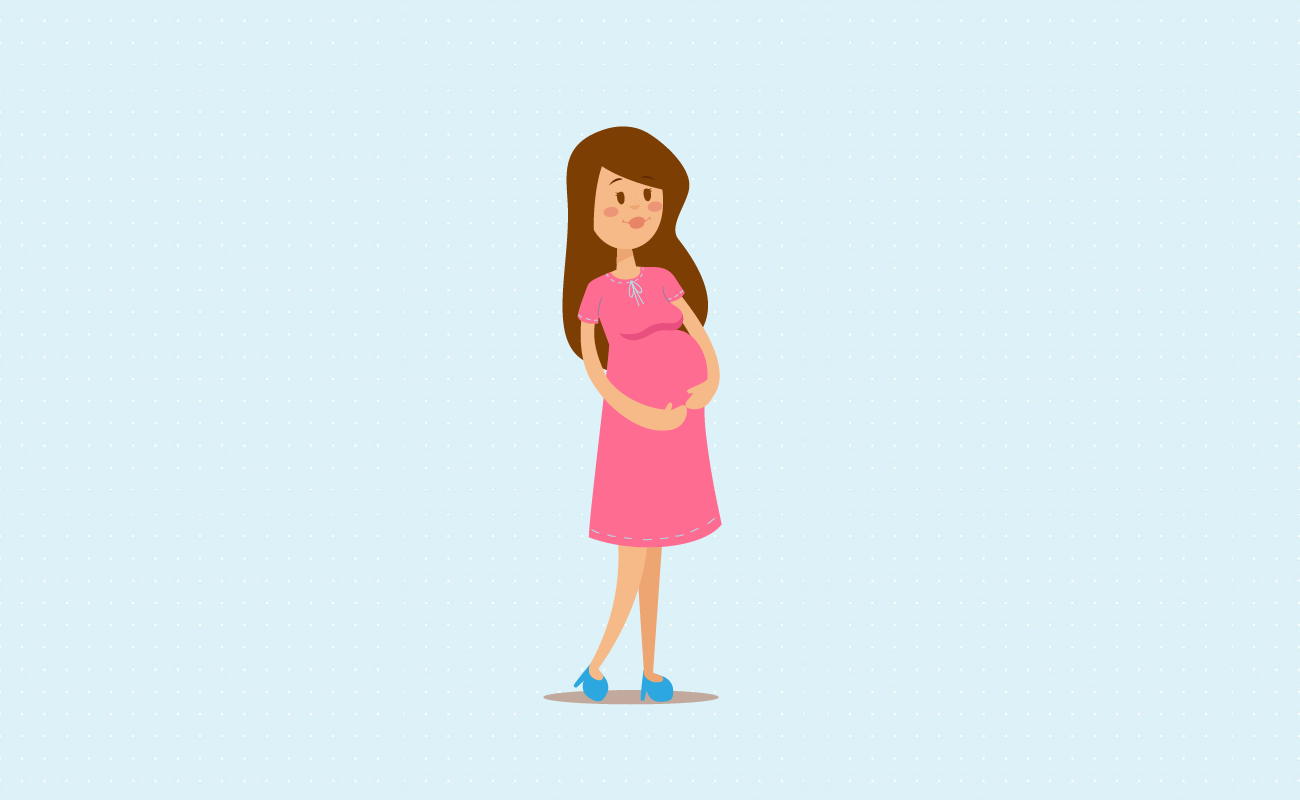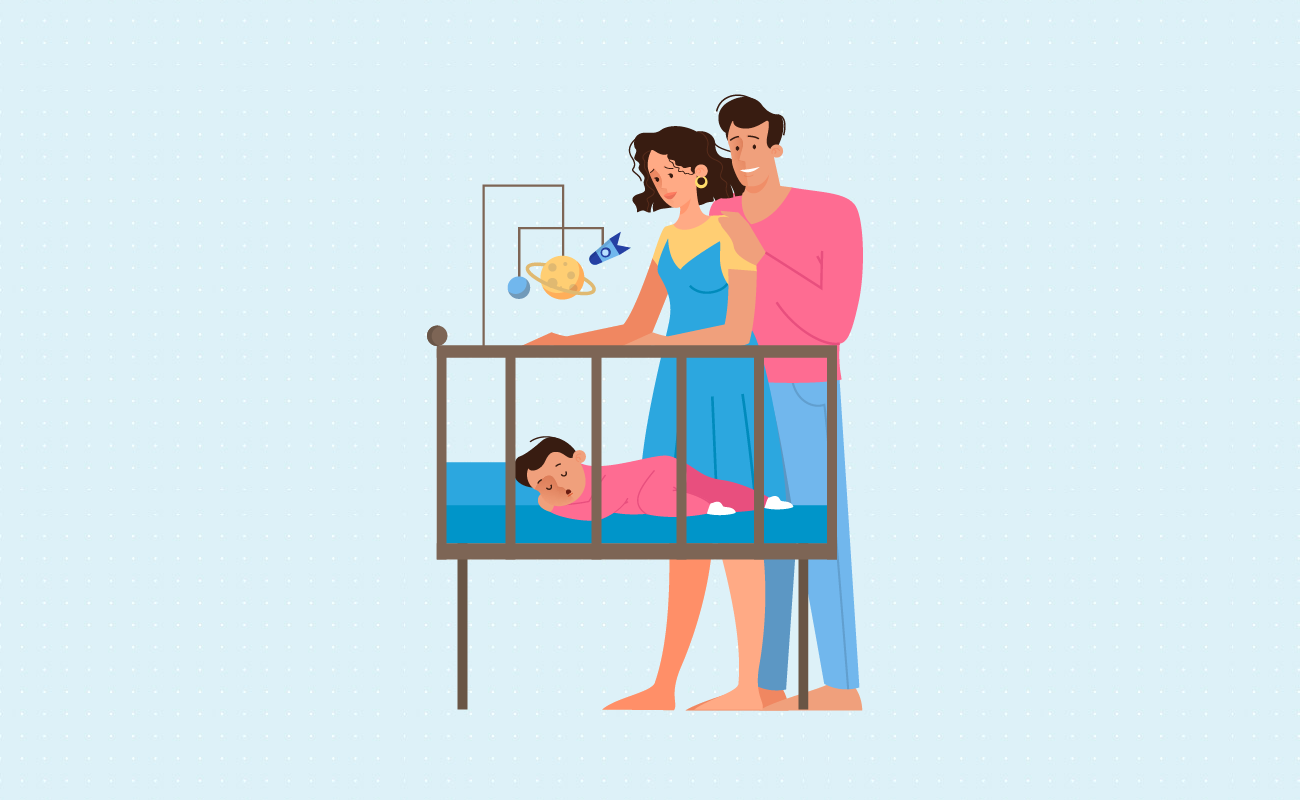Life
 Baby Due Date Calculator
Baby Due Date CalculatorThis calculator uses the first date of your Last Menstrual Period (LMP) to calculate your expected due date if you become pregnant during your fertility window after the LMP. Peak fertility is about 2 weeks after LMP.
Last Menstrual Period Date |
|
|---|---|
| LMP Date: | |
Authored by Jose Abuyuan on January 14, 2021

So, you and your partner are well on track to building your lives. You have funds for a house, a car, and savings. You may even have provisions for retirement and college education for your future kids. There’s only one thing left to do: get on the family way.
Sometimes, hopping aboard the baby train is quite easy. But for some couples, settling down and having kids can be a challenge in itself. Couples can first seek fertility treatment to boost their chances of having kids. If they need extra help, they can also seek out assisted reproductive health options.
As a demographic metric, fertility is defined as the number of children born per woman. The global fertility ratio is around 2.42 children per woman. In the past century, fertility worldwide has gone down even as populations rose. On the surface, this seems contradictory. After all, the 7 billion people alive in 2021 had to come from somewhere. But various statistical factors affect this.
In the past, high birth rates reflected a sobering reality. The lack of adequate healthcare meant that infant mortality rates were high. People expect only a fraction of their children to survive into adulthood. Today, people are having fewer children. But many of these children are guaranteed to live long, healthy lives.
Modern medicine, coupled with changing societal attitudes, led to a massive shift. Better healthcare meant more children survived to adulthood. Contraception access meant people could delay childbearing until later in life. Economic pressure in turn made it practical to have children at a later age.
Centuries ago, it wasn’t unusual to have fertility ratios of 4.5 to 7 children per woman. Similar ratios are still present in areas where modern healthcare is in short supply. In developed nations, people had fewer children but lower infant mortality.

In 2018, the U.S. birth rate dropped to 1.73 births per woman. This represents a 2 percent drop since 2017 and a low not seen since 1986. That same year, birth rates fell across all demographics, except for the 30 to 40 age bracket. People are choosing to have children later in life.
This 32-year slump in births is a social barometer that policy makers should not ignore. Its causes often represent the economic pressures faced by new parents. Young people aren’t thinking of starting families while they struggle with debt. This is accelerating the growing tendency for people to start families later in life. On a positive note, it also means that under-aged pregnancies are becoming less common.
Choosing to have children at a later age comes with consequences both good and bad. On one hand, you’ve given yourself an economic head start. On the other, you may have a more difficult time conceiving.

Fertility is tied to the production of specific cells. Men produce sperm at a constant rate for much of their lives. Women, meanwhile, produce eggs (ova, singular ovum) only at specific intervals. The process takes place during the menstrual cycle. This occurs between one menstruation to the next.
Ladies the world over know “that time of the month” all too well. For most, the cycle follows a pattern that often lasts a month, though this varies. It can be as short as 21 days to as long as 35. Menstruation, meanwhile, can last between two to seven days. The length of a cycle is much longer early in puberty. Over time, it may increase in frequency as you grow older.
The stages of the menstrual cycle are as follows:
| Stage | Duration | Events |
|---|---|---|
| Stage 1 | 1st – 8th Days | The lining of the woman’s uterus breaks down and leaves the body as menstrual discharge. Hormone levels, including those of estrogen, are low. |
| Stage 2 | 1st – 5th Days | Follicles (fluid-filled pockets containing ova) develop in the ovaries. |
| Stage 3 | 5th – 8th Days | One follicle continues growing while the rest are re-absorbed. Bleeding stops by the 8th day. The lining of the uterus begins to thicken again in anticipation of a pregnancy |
| Stage 4 | 14th Day | Ovulation. Estrogen levels peak, which leads to a rise in luteinizing hormone levels. This causes the follicle to burst and release the ovum. |
| Stage 5 | 15th – 24th Days | The ovum travels down the Fallopian tubes toward the uterus. The ruptured follicle induces the production of progesterone. This triggers the further thickening of the uterine lining. |
| Stage 6 | 24th – 28th Days | If the ovum remains unfertilized by sperm, it breaks apart. Estrogen and progesterone levels drop if pregnancy does not take place. |
Pregnancy is likely if intercourse takes place during ovulation or three days before. The best time would be around two weeks into the menstrual cycle. Sperm can survive for up to five days within a woman’s body, whereas an egg lives between 12 and 24 hours.
Each woman’s cycle is different. What defines normal is dependent on the individual. Divergences or any abnormalities to the norm, however, might be a cause for concern. Consult your doctor if you feel anything out of the ordinary about your cycle. The Mayo Clinic outlines some of the things to expect:
Tracking your menstrual cycle is the key to finding out what is normal in your situation. Over the course of several months, take note of the features above.
Once you’ve defined your normal menstrual cycle, be aware of any irregularities. Have you been bleeding between your periods? Ever felt feverish? Was your discharge heavier than the last? Did menstrual flow last longer than a week? Did your periods suddenly become irregular? Consult your physician if you ever found anything that veers away from your normal cycle.
Changes to these cycles are to be expected when you are pregnant or are breast-feeding a child. Likewise, you may expect a few changes to occur when you take hormonal contraceptives. However, other serious conditions may belie any irregularities to your menstrual cycle. Your physician may also point out the following issues:
Some minor irregularities to your menstrual flow can be addressed through hormonal treatments. Ask your healthcare professional for any treatments available for your situation.

Like it or not, everyone’s biological clock is ticking. People slowly lose the ability to reproduce past middle age, though not to the same extent. Then as now, the biological clock heaves hardest on women. They have a narrow window before they lose fertility altogether.
Women produce only a limited supply of ova over the course of their lives. They stop producing ova at around their 50s. After which, menstruation stops. The attendant hormonal changes that prelude this change is aptly known as menopause.
This has, in the past, put a lot of pressure on women to become mothers earlier in their lives. If they wanted to have any children at all, they must do it soon. The decision to have kids must be done before that ominous deadline. It’s not something you can put off until tomorrow. For many years, women couldn’t make sweeping long-term plans because of that.
Fertility for most women stops at 50. But that doesn’t mean they can’t get pregnant. There are plenty of cases of women safely carrying children to term in their sixties and above. Dawn Brooke, who holds the record for being the oldest woman to have a natural pregnancy, gave birth at age 59. She became pregnant by accident via hormone treatments meant for menopause. Through other assisted reproduction methods, even older women carried healthy children to term.
This phenomenon opens up many possibilities for hopeful mothers everywhere. The last barrier to motherhood, age, could finally be surmounted. Forward planning can help women conceive children with their own ova. That said, pregnancy in your old age can be a risky affair. You have a higher risk for pre-eclampsia and other complications during childbirth.
Men lose fertility much slower than women. An older man can still have natural children with a younger partner. Lowering testosterone levels in men do produce unpleasant symptoms. But andropause is nothing to be worried about from a fertility perspective. What does affect men’s fertility is sperm quality and volume. The number and quality of the sperm men produce declines over time. Older men may find difficulty conceiving a child due to lower sperm counts.
Being unable to have kids the regular way can be an emotional challenge for couples. Those who want to start a family may feel disheartened by false starts. Fortunately, there are many options to help couples get on track to having a family.
Infertility is defined as the inability to reproduce. The causes are many and varied, and may not be clear to the couple. Diagnosing the cause is the first step toward addressing your childbearing needs. The first step is to find out if you might have fertility issues in the first place. Ask a few key questions about yourself, then check with your physician.
For most couples, the first question to ask is how often they’ve tried to conceive. Women below the age of 35 will, with a little patience, conceive in less than a year of trying. Those over the age of 35, meanwhile, may conceive in one to two years. If you haven’t been trying that long, have patience. Any longer and it might be time to re-evaluate your fertility.
Women might also have trouble conceiving if they’ve had menstrual irregularities. This might suggest problems that affect the survival or viability of your ova. Other reasons may be tied to family and medical history. Have your parents or grandparents had any difficulty conceiving before? Have you experienced failed pregnancies before? These may affect your ability to conceive.
Getting to the root of fertility issues is a challenging proposition. Both male and female partners should get tested to rule out all possible causes. The course of action you can take will depend on your diagnosis. Some causes of fertility problems are easier to solve than others. How will you find out if you’re in the family way?
Much of what affects fertility in women is tied to the production of ova. The production of eggs may be disrupted by various factors. Other times, it is linked to the early stages of pregnancy itself. Often, abnormalities in a woman’s menstrual cycle can be linked to infertility. Some of the common causes are listed below:
For men, infertility is tied to semen production, quality, and delivery. Many of these issues can be addressed and identified through a semen analysis. These findings first reveal if there is enough sperm in the semen. It can also reveal the fitness of the sperm within. Some of the common causes of male infertility are as follows:
For both men and women, lifestyle choices can have a profound effect on their fertility. Smoking, alcohol consumption, hot tub use, and poor dietary choices can contribute to fertility issues. As an environmental factor, stress can also contribute to conception difficulties. Once you’ve understood the roots of infertility you can move on to possible treatment. Each case is different, and not everyone’s course of action will be the same.

Get tested as soon as you believe you’re having a difficult time conceiving. The sooner you identify your infertility issues, the sooner you can move to treatment.

Once your physician knows the root of your fertility issues, they can suggest the appropriate course of treatment. Many of these barriers to conception can be remedied through timely medical interventions. Hormonal treatments can help make your body more receptive to pregnancy. Anatomical issues can sometimes be addressed only through surgery.
When hormones don’t work by themselves, it might be time to consider assisted reproduction. Assisted reproduction involves inducing conception or pregnancy through artificial means. You might consider these if prior attempts at natural conception fail or are simply not possible.
Be forewarned. Many assisted reproductive technologies can be stressful affairs themselves. However, they can give you a higher chance of getting a baby or two.
Often, the first course of treatment for infertility are hormone treatments. This is usually recommended for patients whose fertility problems are caused by imbalances. Hormones have a profound effect on a person’s reproductive ability. These are also often the first to be thrown off balance. Going on a hormone regimen can help increase the odds of having children the natural way.
Hormonal treatments are one of the least expensive ways to address fertility issues. Fertility medications to encourage hormone production can cost you between $5 and $20 per month. Injectable hormones, meanwhile, can cost up to $2,000 per month. They have few side effects, such as premenstrual cramps.
Artificial insemination involves introducing semen into the woman’s cervix during ovulation. This can come from the woman’s male partner or a donor. It can be done with no extra treatment if a woman has regular menstrual cycles. If your cycle is less than predictable, you can choose to track it or take hormone treatments. 40 percent of women under the age of 40 would get pregnant through this method after no more than six attempts.
A variation on the same principle is intrauterine insemination (IUI). This is far more refined and involves inserting the sperm via catheter to the uterus itself. Placing it further in is more invasive but brings the sperm much more closer to the ova. The success rate for IUI is between 5 and 20 percent.
The advantage of artificial insemination lies in its costs. Its price range is between $300 to $1,000 per session and is often covered by insurance plans. This method is ideal for couples whose male partner has slow-moving sperm or low sperm counts. It is also a preferred method of conception for same-sex couples.
In-vitro fertilization (IVF) involves conceiving the embryo outside a woman’s body. Although called “test tube babies,” children conceived through IVF are not conceived through test tubes. Instead, they are conceived in a petri dish from ova and sperm. These could come from you and your partner or from donors. The resulting embryos are implanted into the woman’s uterus in multiple batches.
Women undergoing IVF often need hormone treatments to spur ovulation and encourage pregnancy. These can come with unpleasant side effects for some women, however. If you prefer, you can instead sync the IVF process according to your natural menstrual cycle.
You can choose IVF if previous attempts at artificial insemination have failed. IVF could also help men with severe sperm deficiencies conceive children. This is also an ideal option for women with the following conditions:
Moreover, IVF is an excellent option for same-sex couples and couples who must screen embryos for genetic defects. In 2020, the average costs of IVF run between $15,000 and $25,000 per cycle. This is a steep cost if not covered by insurance.
The younger a mother is, the more successful the IVF procedure can be. Women younger than 35 have the highest success rates at almost 50 percent. Older women past the age of 42, meanwhile, have a success rate of under 4 percent.
Some women, due to elevated risks of carrying a child to term, cannot get pregnant themselves. In these exceptional cases, surrogacy might be the ideal option. This involves hiring a surrogate to carry a child on their behalf. The parents of a child act as the source of the donor sperm and ova, which is implanted onto the surrogate’s uterus. She carries on with the pregnancy and delivers the child. The child will often be the biological child of one or more of the sponsor parents, rather than the surrogate’s.
Surrogacy is also a good option for same-sex couples. However, it is the costliest of the available treatments. Besides the cost of each treatment, sponsor parents must cover various logistical expenses. They provide a generous salary and allowances to the surrogate. Other factors that add to its price include legal fees and insurance coverage. Parents can expect to pay between $90,000 and $130,000 for this option.
It can take up to two years to clear out the details necessary for the surrogacy process to carry on. Moreover, surrogacy falls into a delicate legal area. Laws governing surrogacy are complex to navigate where they are available. Surrogacy is also not available in Michigan.
Not everyone can produce sperm or eggs of sufficient quality to succeed. This is especially true for older women. Prospective parents may also have genetic conditions they do not want to pass onto their children. Using sperm or ova from a donor is one way of circumventing this. Fresh donor eggs have a success rate of up to 50 percent, whereas frozen ones have a success rate of 40 percent.
Have an honest talk with your partner before proceeding with this option. The child born through alternative means would only be related by blood to one parent. Make sure you and your partner are willing to raise a child that isn’t biologically yours or theirs. You should also be honest with your child or children as they grow up about their origins.

Talk to your doctor on the plans you may have to address conception issues. They will inform you and your partner of best methods for your situation. Listen carefully and don’t be afraid to ask questions. The journey to parenthood begins with making informed choices. This should align with both your health needs and your mutual personal preferences.
Once you do get pregnant, it’s time to plan for the future. The first thing you’ll need to take care of is your own health. Your doctor might ask you to make lifestyle decisions to help the process along. Now might be the time to manage your weight or quit smoking. Eat healthy and make informed decisions on the things you and your child need. For pregnant women, stay in touch with your obstetrician. They will know exactly what you and your baby need throughout your pregnancy.
When fertility is an issue, getting on the family way might seem expensive. But it doesn’t hold a candle to what you’ll need to raise a child. You must make long-term plans to secure your children’s financial future as early as now. Meanwhile, look ahead toward bigger things. Consider making budget preparations for college as early as now. Check out our guide on our college education calculator.
Jose Abuyuan is a web content writer, fictionist, and digital artist hailing from Las Piñas City. He is a graduate of Communication and Media Studies at San Beda College Alabang, who took his internship in the weekly news magazine the Philippines Graphic. He has authored works professionally for over a decade.